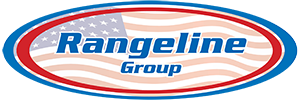Wet tapping is one of the most in-demand services that we offer here at Rangeline Tapping Services.
What is a Wet Tap?
What is a wet tap? A wet tap procedure enables us to tap into existing pressurized pipelines without inhibiting the flow. This is important, because most wet taps are done on potable water, reclaimed water, and sewage lines, so any interruption in services can be inconvenient at best and life threatening at worst. A wet tap can be used for an enormous variety of procedures and as such, is constantly in demand. Almost all of our (wet tap) water main and (wet tap) pipe requests come from city officials in charge of the water-based infrastructure for residential and commercial areas. Learn more about our wet tap services, including how a wet tap procedure is performed and what separates a wet tap from a hot top.
Why use a Wet Tap?
Wet taps are used for a variety of reasons. The most common is construction. Wet taps can be used to add new lines to an existing pipeline or water main to bypass an old or damaged system. This bypass can be temporary in order to affect repairs, or permanent. Small wet taps can be used to install sampling ports, which is essential for potable water quality control. They can also be useful as emergency measures, in case of a water main break or a shattered sewage line. Wet taps are extremely versatile and endlessly useful. But how is a wet tap procedure performed?
How is a (Wet Tap) Procedure Performed?
First, we install a tapping sleeve by bolting it around the pipe. Then we install a valve on to the tapping sleeve. Now, we pressure test these two permanent fixtures. Depending on the product being transported through the lines, the pressure must be below a certain threshold. This also allows us to ensure that the integrity of the system hasn’t been compromised. Once that has been accomplished, the tap is then created and the piece of pipe that has been cut away, known as the coupon, is retracted using the bit and the wet tap procedure in now complete.
Wet vs. Hot Tap
A wet tap is done almost exclusively on pipelines that carry potable water, reclaimed water, and sewage to and from residential and commercial areas. Hot taps, on the other hand, are performed in more industrial settings. These are generally done on pipelines that carry more volatile products, such as natural gas, gasoline, and jet fuel. Both taps use the same machinery and are done in similar ways. The main difference between the two is only in the type of pipes and products that they are performed on.
In Case of Emergency
Both wet and hot taps can be used in case of an emergency. Emergencies in this context would be broken water or sewage main, or a cracked natural gas pipe. Broken water lines can cause a great deal of damage to road works and house foundations, where a natural gas leak will cause evacuations at best, and explosions in the very worst case. At Rangeline, we are available 24 hours a day, 365 days a year to address any emergency situations that may arise.
We strive to offer you the very best (wet tap) services in the industry. As a result, we will only employ the most experienced and highly trained technicians to perform services at our (wet tap) company. Contact us to learn more about our wet tap services for your residential or commercial infrastructure.
